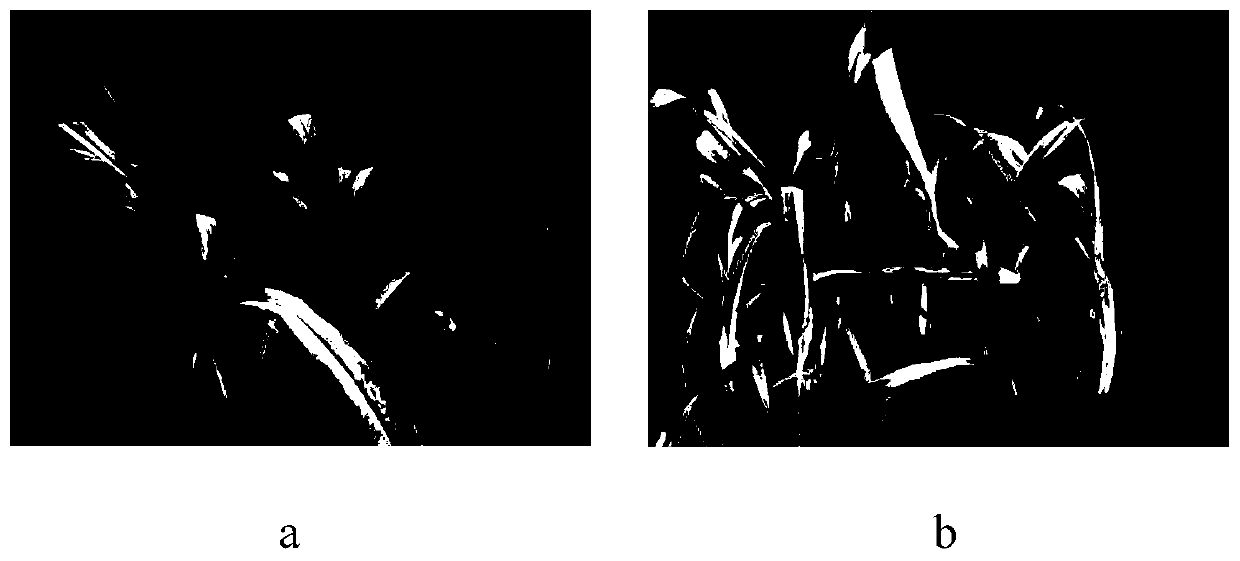Method for screening salt-tolerant day lily varieties based on glyoxalase activity
A technology of glyoxalase and Hemerocallis, which is applied in the field of screening salt-tolerant Hemerocallis varieties based on glyoxalase activity, can solve the problems of costing a lot of manpower, polluting soil, etc., and achieve the effect of low cost, short cycle and accurate screening results
- Summary
- Abstract
- Description
- Claims
- Application Information
AI Technical Summary
Problems solved by technology
Method used
Image
Examples
Embodiment 1
[0022] The method for screening hemerocallis tolerant varieties based on glyoxalase activity of this embodiment includes the following steps:
[0023] (1) Take 0.1g of the young leaves of the Hemerocallis variety ‘Tranquil Morgan’, crush them into fine powder in liquid nitrogen, and add 1 mL of 0.1 mol·L -1 Phosphate buffer solution, shake well; at 4℃, 1000 revolutions·min -1 Centrifuge for 10 min, take the supernatant, which is the protein solution of the young leaves of Hemerocallis, and divide it into two equal parts, one for the determination of protein content and the other for the determination of glyoxalase activity; the phosphate buffer is pH= 7.2, also contains 1mmol·L -1 Phenylmethylsulfonyl fluoride and 1% polyvinylpyrrolidone;
[0024] (2) The method for determining protein content: Coomassie brilliant blue method.
[0025] Take 60 μL of the leaf protein solution in a 10 mL centrifuge tube, add the reaction solution [Coomassie Brilliant Blue 4 mL, distilled water 940 μL] ...
Embodiment 2
[0029] The method for screening hemerocallis tolerant varieties based on glyoxalase activity of this embodiment includes the following steps:
[0030] (1) Take 0.1g of the young leaves of the Hemerocallis variety "Duplex", crush them into fine powder in liquid nitrogen, and add 1mL of 0.1mol·L -1 Phosphate buffer solution, shake well; at 4℃, 1000 revolutions·min -1 Centrifuge for 10 min, take the supernatant, which is the protein solution of the young leaves of Hemerocallis, and divide it into two equal parts, one for the determination of protein content and the other for the determination of glyoxalase activity; the phosphate buffer is pH= 7.2, also contains 1mmol·L -1 Phenylmethylsulfonyl fluoride and 1% polyvinylpyrrolidone;
[0031] (2) The method for determining protein content: Coomassie brilliant blue method.
[0032] Take 60 μL of the leaf protein solution in a 10 mL centrifuge tube, add the reaction solution [Coomassie Brilliant Blue 4 mL, 940 μL of distilled water] to the s...
Embodiment 3
[0036] The method for screening hemerocallis tolerant varieties based on glyoxalase activity of this embodiment includes the following steps:
[0037] (1) Take 0.1g of the young leaves of the Hemerocallis variety ‘Golden Doll’, pulverize them into fine powder in liquid nitrogen, and add 1 mL of 0.1 mol·L -1 Phosphate buffer, shake well; at 4℃, 1000 revolutions.min -1 Centrifuge for 10 min, take the supernatant, which is the protein solution of the young leaves of Hemerocallis, and divide it into two equal parts, one for the determination of protein content and the other for the determination of glyoxalase activity; the phosphate buffer is pH= 7.2, also contains 1mmol·L -1 Phenylmethylsulfonyl fluoride and 1% polyvinylpyrrolidone;
[0038] (2) The method for determining protein content: Coomassie brilliant blue method.
[0039] Take 60 μL of the leaf protein solution in a 10 mL centrifuge tube, add the reaction solution [Coomassie Brilliant Blue 4 mL, 940 μL of distilled water] to the...
PUM
 Login to View More
Login to View More Abstract
Description
Claims
Application Information
 Login to View More
Login to View More - R&D
- Intellectual Property
- Life Sciences
- Materials
- Tech Scout
- Unparalleled Data Quality
- Higher Quality Content
- 60% Fewer Hallucinations
Browse by: Latest US Patents, China's latest patents, Technical Efficacy Thesaurus, Application Domain, Technology Topic, Popular Technical Reports.
© 2025 PatSnap. All rights reserved.Legal|Privacy policy|Modern Slavery Act Transparency Statement|Sitemap|About US| Contact US: help@patsnap.com


